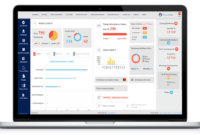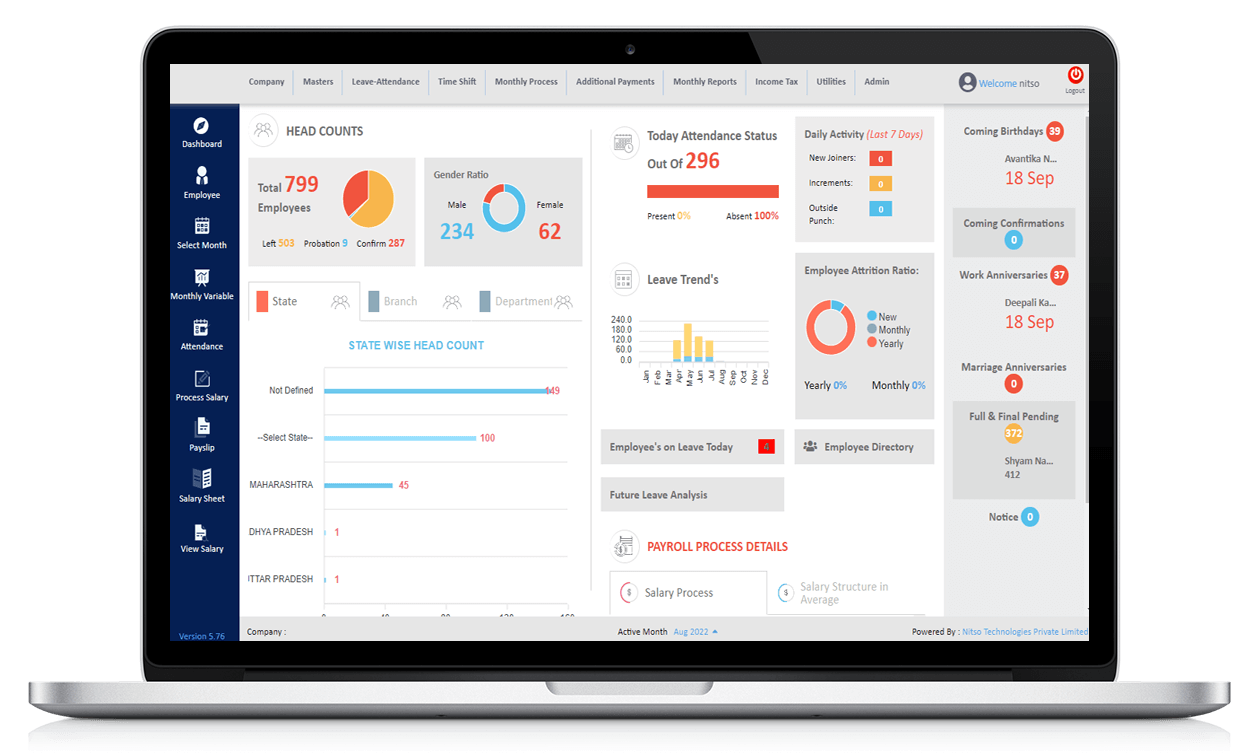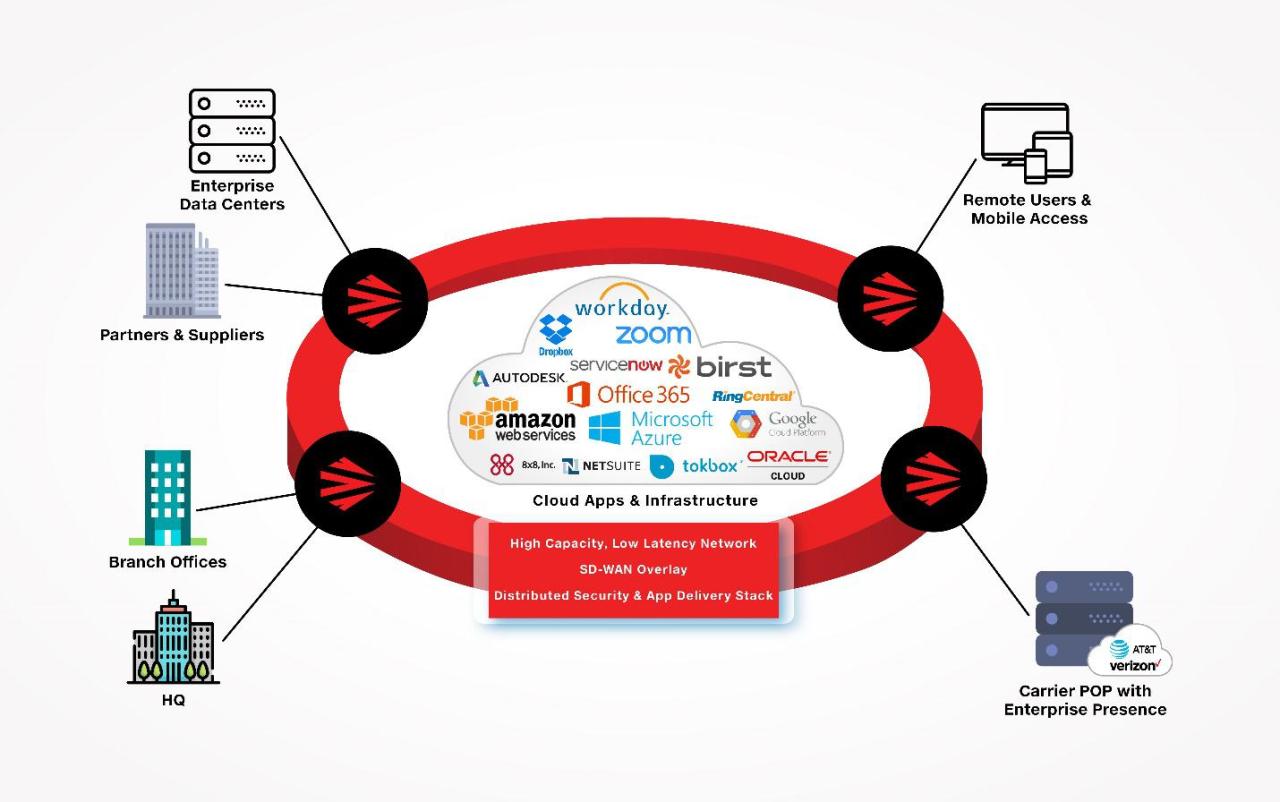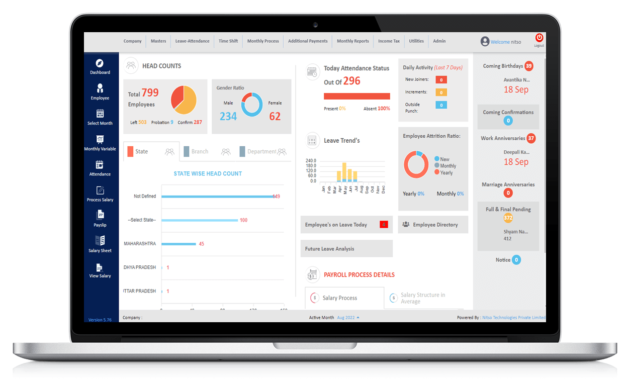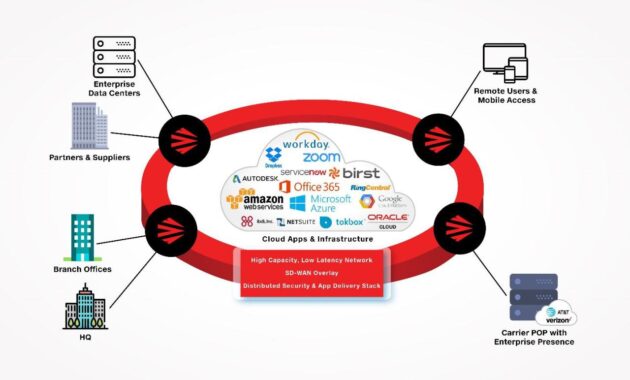Cloud computing and security are intertwined concepts that define the modern landscape of digital data management. As organizations increasingly rely on cloud services for their computing needs, understanding the implications of security in these environments becomes paramount. This overview will delve into the complexities of cloud computing, highlighting its fundamental components, service models, and the importance of safeguarding data against potential threats.
In a world where data breaches and cyber threats are on the rise, knowing how to effectively secure cloud infrastructures is crucial. With various deployment models and compliance requirements, businesses must navigate a complex terrain to protect their sensitive information while leveraging the benefits of cloud technologies. Join us as we explore the key aspects of cloud security, from common threats to the best practices that ensure a secure environment.
Overview of Cloud Computing
Cloud computing has revolutionized the way businesses and individuals utilize technology, allowing for greater flexibility, efficiency, and scalability. At its core, cloud computing refers to the delivery of computing services over the internet, encompassing storage, processing power, and applications. This model enables users to access and manage data without the need for extensive local infrastructure, leading to enhanced collaboration and reduced operational costs.The main components of cloud computing include servers, storage systems, and networks that work in tandem to provide various services.
These components are organized into different service models, which cater to specific needs and use cases. The three primary service models are Infrastructure as a Service (IaaS), Platform as a Service (PaaS), and Software as a Service (SaaS). Each model offers unique functionalities and levels of control to users, ranging from raw computing resources to fully managed applications.
Service Models
Understanding the various service models is essential for organizations to choose the right cloud solutions that match their operational requirements. Each model serves a distinct purpose and provides varying degrees of management and control:
- Infrastructure as a Service (IaaS): This model delivers virtualized computing resources over the internet. Users can rent servers, storage, and networking on a pay-as-you-go basis, allowing for significant cost savings and scalability. Common examples include Amazon Web Services (AWS) and Microsoft Azure.
- Platform as a Service (PaaS): PaaS offers a platform allowing developers to build, deploy, and manage applications without worrying about the underlying infrastructure. This model streamlines the development process and enhances productivity, with notable examples being Google App Engine and Heroku.
- Software as a Service (SaaS): SaaS delivers software applications over the internet on a subscription basis. Users can access applications from any device without the need for installation or maintenance. Popular SaaS offerings include Salesforce, Dropbox, and Google Workspace.
Deployment Models
The deployment models of cloud computing determine how cloud resources are acquired and managed, impacting security, privacy, and control. These models include public clouds, private clouds, and hybrid clouds, each with its own characteristics and use cases.
- Public Cloud: In a public cloud setup, services are delivered over the internet and shared among multiple customers. This model is cost-effective and offers high scalability, making it an attractive option for small to medium-sized businesses. Providers like AWS and Google Cloud are prime examples.
- Private Cloud: A private cloud is dedicated to a single organization, providing greater control and security. This model is often favored by enterprises that require compliance with regulations or have sensitive data. Organizations can manage private clouds on-premises or through a third-party provider.
- Hybrid Cloud: Hybrid clouds combine elements of both public and private clouds, allowing organizations to benefit from the advantages of both. This model offers flexibility in managing workloads and data, enabling businesses to scale resources as needed while keeping sensitive information secure.
“Cloud computing enables businesses to access advanced technology without the heavy capital expenditures associated with traditional IT infrastructure.”
Importance of Security in Cloud Computing
In today’s digital landscape, cloud computing has revolutionized the way businesses operate. However, with this shift to cloud environments comes significant security challenges that cannot be overlooked. The importance of security in cloud computing is paramount, as it safeguards sensitive data and maintains the integrity of business operations.As organizations increasingly rely on cloud services, security breaches have become a pressing concern.
According to Cybersecurity Ventures, it’s predicted that cybercrime will cost the world $10.5 trillion annually by 2025. In the context of cloud computing, a report by the Cloud Security Alliance revealed that 94% of organizations experienced a security incident in the cloud. These alarming statistics underscore the necessity of implementing robust security measures in cloud services to protect against data loss, theft, and compliance violations.
Shared Responsibility Model in Cloud Security
Understanding the shared responsibility model is essential for navigating cloud security effectively. This model delineates the security obligations of both cloud service providers (CSPs) and customers. While CSPs are responsible for securing the infrastructure that supports cloud services, customers must take charge of their own data security and application configurations.The shared responsibility model can be summarized as follows:
- Provider’s Responsibilities: CSPs are tasked with ensuring the security of the cloud infrastructure, including hardware, software, networking, and facilities. They maintain physical security, patch vulnerabilities, and comply with regulatory requirements.
- Customer’s Responsibilities: Customers must manage their data security, including encryption, identity management, and access controls. They are responsible for setting proper configurations and ensuring secure application development practices.
This collaborative effort highlights that both parties play a crucial role in maintaining a secure cloud environment. Recognizing this shared responsibility is key to minimizing risks associated with cloud computing and enhancing overall security posture.
“In the cloud, security is a partnership—understanding your responsibilities is the first step to safeguarding your assets.”
Common Cloud Security Threats
As organizations increasingly migrate to cloud environments, understanding the common security threats that arise is crucial. The cloud’s shared resources and multi-tenant architecture present unique vulnerabilities that can be exploited by malicious actors. Addressing these threats is essential to safeguarding sensitive data and maintaining trust.
Prevalent Security Threats in Cloud Computing
With the growth of cloud computing, various security threats have become prevalent. These threats can compromise the integrity, confidentiality, and availability of data stored in the cloud. Awareness of these threats allows organizations to implement robust security measures. Some of the key threats include:
- Data Breaches: Unauthorized access to sensitive data is one of the most significant risks in cloud environments. A data breach can result in severe financial losses, legal repercussions, and damage to an organization’s reputation.
- Insufficient Identity and Access Management: Weak authentication mechanisms can lead to unauthorized users gaining access to critical cloud resources, increasing the risk of data loss or malicious activity.
- Insecure APIs: Application Programming Interfaces (APIs) that are not properly secured can be exploited by attackers, leading to data exposure or system compromise.
- Account Hijacking: If an attacker gains control of a cloud account, they can access sensitive data and perform unauthorized actions, potentially leading to further security incidents.
Data Breaches and Their Implications
Data breaches in cloud computing can have dire consequences for organizations. These incidents often result from inadequate security measures, and the implications can be far-reaching. A notable example is the 2019 Capital One breach, where the personal information of over 100 million customers was exposed due to a misconfigured firewall. The impact of a data breach can include:
- Financial Loss: Organizations face direct costs such as fines, legal fees, and remediation expenses, alongside indirect costs like loss of customer trust and market share.
- Legal Consequences: Breaches can lead to lawsuits and regulatory fines, especially if organizations fail to comply with data protection laws like GDPR or HIPAA.
- Reputational Damage: Once a breach occurs, restoring customer confidence can be difficult, impacting business relationships and future sales.
Risks of Insufficient Data Protection Measures
Organizations that neglect to implement robust data protection measures expose themselves to significant risks. Insufficient security can manifest in several ways, including inadequate encryption, poor access controls, and lack of regular security audits. The risks associated with insufficient data protection include:
- Unencrypted Data Exposure: Without proper encryption, sensitive data stored in the cloud is vulnerable to interception and unauthorized access.
- Inconsistent Security Policies: A lack of uniform security protocols across departments can create vulnerabilities that attackers might exploit.
- Failure to Monitor and Respond: Without continuous monitoring, organizations may be unaware of ongoing attacks, delaying their response and exacerbating potential damage.
Cloud Security Measures and Best Practices
Securing cloud environments is paramount for organizations embracing digital transformation. As businesses migrate to the cloud, understanding and implementing best practices in cloud security helps mitigate risks, protect sensitive information, and maintain compliance with regulations. This segment delves into essential strategies to fortify cloud security.
Best Practices for Securing Cloud Environments
To effectively secure cloud environments, organizations should adopt a multi-layered approach that incorporates various best practices. These practices encompass governance, risk management, and technical controls, ensuring comprehensive security coverage.
- Use strong and unique passwords for cloud accounts, combined with two-factor authentication (2FA) for an additional layer of security.
- Regularly update and patch cloud software to protect against known vulnerabilities.
- Implement access controls to ensure that only authorized users can access sensitive data and resources.
- Conduct regular security audits and assessments to identify vulnerabilities and compliance gaps.
- Utilize security information and event management (SIEM) tools for real-time monitoring and anomaly detection.
Encryption Methods for Data at Rest and in Transit
Encryption is a crucial component of cloud security, safeguarding data both at rest and in transit. Implementing strong encryption techniques ensures that sensitive information remains protected from unauthorized access and breaches.Data at rest refers to inactive data stored physically in any digital form (e.g., databases, data warehouses). To safeguard this data:
- Utilize encryption algorithms such as AES (Advanced Encryption Standard) to encrypt files and databases.
- Employ tokenization to replace sensitive data with unique identification symbols, minimizing exposure.
For data in transit, which involves data actively moving from one location to another (e.g., across networks):
- Use TLS (Transport Layer Security) protocols to encrypt communications between clients and servers.
- Implement VPNs (Virtual Private Networks) to secure data transfers over public networks.
Cloud Security Measures Assessment Checklist
Assessing cloud security measures is vital for ensuring robust protection. A well-structured checklist serves as a guide to evaluate the effectiveness of current security protocols.
“A comprehensive security checklist aids organizations in identifying and addressing potential vulnerabilities proactively.”
Consider the following checklist elements:
- Have all cloud service providers undergone rigorous security assessments and certifications?
- Is there a clear data encryption strategy for both data at rest and in transit?
- Are identity and access management protocols in place, including role-based access controls?
- Is there a documented incident response plan for addressing potential security breaches?
- Are regular training and awareness programs conducted for employees regarding cloud security best practices?
Compliance and Regulatory Issues

Navigating the landscape of compliance and regulatory issues is crucial for businesses utilizing cloud services. The rise of cloud computing has transformed how data is stored and managed, but it has also ushered in a complex array of compliance requirements that organizations must adhere to. Understanding these regulations is essential not just for legal compliance but for building customer trust and maintaining a competitive edge.The compliance landscape varies significantly depending on the industry and geographical location of the business.
Regulations such as the General Data Protection Regulation (GDPR) and the Health Insurance Portability and Accountability Act (HIPAA) impose strict guidelines on how businesses handle sensitive information. Non-compliance with these regulations can lead to severe penalties, including hefty fines, legal repercussions, and damage to reputation.
Key Compliance Requirements for Cloud Services
Organizations must be aware of several key compliance requirements when utilizing cloud services. These include:
- GDPR: The GDPR applies to organizations that handle the personal data of EU citizens. It mandates that data be processed securely, with user consent, and provides individuals with rights over their data.
- HIPAA: HIPAA mandates the protection of sensitive patient information by healthcare providers. Cloud service providers that host healthcare data must ensure compliance with stringent security measures and data privacy protocols.
- PCI DSS: The Payment Card Industry Data Security Standard (PCI DSS) requires organizations that process credit card information to maintain a secure environment to protect cardholder data.
- ISO 27001: This international standard Artikels requirements for establishing, implementing, maintaining, and continually improving an information security management system (ISMS).
Failure to comply with these regulations not only opens businesses up to financial penalties but can also lead to loss of customer trust. In today’s digital age, consumers are increasingly concerned about how their data is handled. A failure to meet compliance can result in significant reputational damage.
Impact of Non-Compliance on Businesses
The consequences of non-compliance can be dire for organizations.
Non-compliance can lead to fines reaching millions of dollars, depending on the severity of the violation and the regulatory framework in question.
In addition to financial repercussions, businesses may also face legal actions from customers or regulatory bodies. For instance, in 2020, a social media platform was fined $5 billion by the Federal Trade Commission (FTC) for privacy violations, which underscored the financial and reputational risks associated with non-compliance.
Importance of Audits and Assessments
Regular audits and assessments play a pivotal role in ensuring compliance with relevant regulations. They help organizations identify vulnerabilities and areas for improvement in their data management practices.Conducting audits allows businesses to verify that their cloud service providers adhere to necessary compliance standards. This proactive approach not only mitigates risks but also demonstrates a commitment to data security and privacy, which can enhance customer confidence.
In addition, assessments ensure that organizations remain updated with evolving regulations and industry standards. Given that compliance requirements can change frequently, a structured approach to regular audits can significantly bolster a company’s adherence to necessary regulations.
Case Studies on Cloud Security Incidents
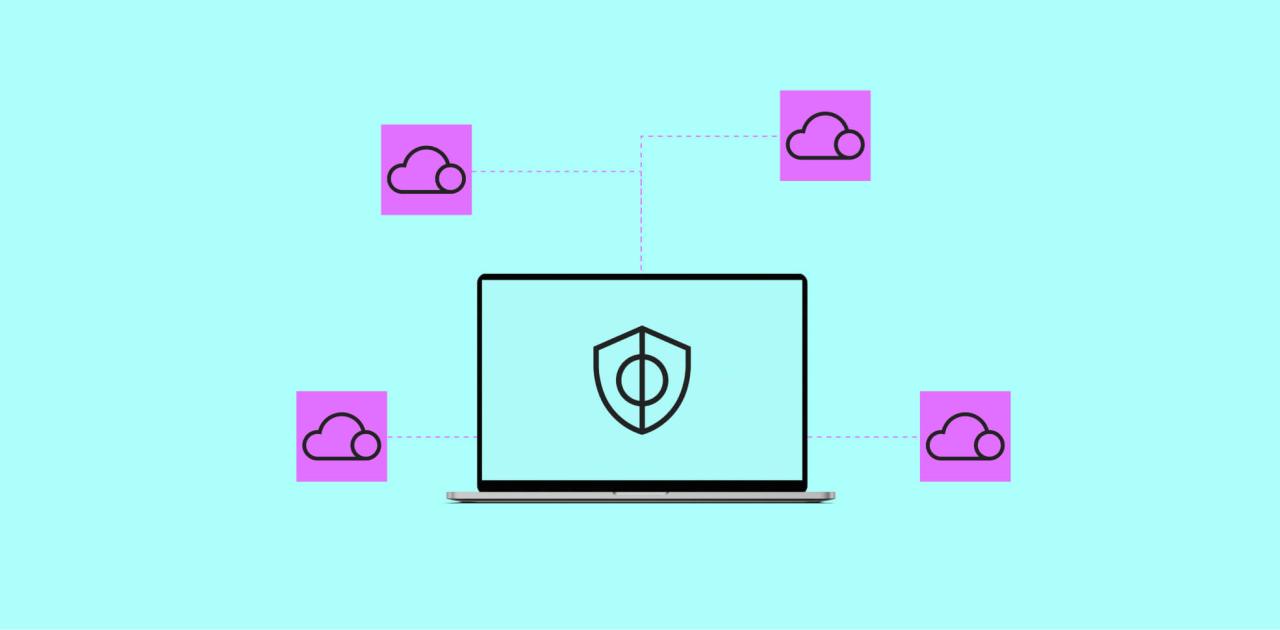
The growing reliance on cloud computing has unfortunately led to a number of high-profile security breaches. Understanding these incidents is crucial for organizations looking to enhance their security posture. Analyzing past failures provides valuable insights into response strategies and highlights the importance of robust security measures.
Significant Cloud Security Breaches
Several notable cloud security incidents have resulted in massive data breaches, affecting millions of users and leading to severe reputational and financial damage for the organizations involved. Here are a few significant cases:
- Capital One (2019): A misconfiguration in a web application firewall allowed a former employee of Amazon Web Services to access sensitive data of over 100 million customers. The breach was traced back to inadequate security measures and insufficient validation of access controls.
- Dropbox (2012): An incident where an employee’s credentials were compromised led to the exposure of 68 million user accounts. The lack of two-factor authentication at the time allowed attackers to gain unauthorized access easily.
- Adobe (2013): Adobe suffered a significant data breach when hackers accessed 38 million user accounts. The breach was exacerbated by weak password storage practices, as the attackers were able to decrypt many of the stored passwords.
Response and Recovery Strategies
The response strategies employed by organizations during these incidents can greatly influence the speed and effectiveness of recovery efforts. Each case illustrates different approaches to incident response:
- Capital One: Following the breach, Capital One took immediate action by notifying affected customers and implementing stricter security protocols. They focused on enhancing their cloud security measures, including better configurations and increased monitoring.
- Dropbox: In response to the breach, Dropbox expedited the rollout of two-factor authentication for all users, significantly improving account security. They also launched a comprehensive security awareness campaign to educate users about best practices.
- Adobe: Adobe implemented stronger encryption methods for sensitive data after the breach. They worked closely with law enforcement to track down the attackers and increased their overall security architecture to prevent future incidents.
Lessons Learned from Security Incidents
Each security breach serves as a learning opportunity, prompting organizations to reassess their cloud security strategies. The following lessons are crucial for improving future security measures:
- Regular Security Audits: Frequent security assessments can identify vulnerabilities before they are exploited. Organizations should conduct routine checks to ensure compliance with best practices.
- Employee Training: Ensuring that employees understand security protocols and the importance of protecting sensitive data can prevent lapses that might lead to breaches.
- Robust Access Controls: Implementing stringent access controls and regularly reviewing permissions can minimize the risk of unauthorized access to sensitive information.
- Incident Response Plans: Having a well-defined incident response plan can streamline the reaction to breaches, ensuring that organizations act quickly and effectively to mitigate damage.
“Learning from past security breaches is essential for fortifying today’s cloud infrastructure and preventing future incidents.”
Future Trends in Cloud Security
As cloud computing continues to evolve, so too does the landscape of cloud security. With increasing reliance on cloud services, organizations must stay ahead of emerging threats and technologies that can enhance their security postures. This section delves into the future trends poised to shape cloud security in the coming years.
Emerging Trends in Cloud Security Technologies, Cloud computing and security
The cloud security landscape is witnessing new technologies and methodologies aimed at bolstering security measures. Key trends include:
- Zero Trust Architecture: This model advocates for the principle of ‘never trust, always verify,’ ensuring that every access request is rigorously authenticated, irrespective of its origin.
- Cloud Access Security Brokers (CASBs): These tools serve as intermediaries between users and cloud service providers, enabling organizations to enforce security policies and ensure compliance.
- Secure Access Service Edge (SASE): This convergence of network and security services provides secure access regardless of user location, addressing the needs of remote work.
- Container Security: As businesses increasingly adopt containerization, securing these environments through specialized tools and techniques is becoming essential to prevent vulnerabilities.
Role of AI and Machine Learning in Enhancing Cloud Security
Artificial Intelligence (AI) and Machine Learning (ML) are revolutionizing cloud security with their capabilities to analyze vast amounts of data and detect anomalies. Their contributions include:
- Automated Threat Detection: AI/ML algorithms can identify patterns and flag potential security breaches or intrusions in real-time, significantly reducing response times.
- Predictive Analytics: By analyzing historical data and trends, AI can forecast potential threats, allowing organizations to proactively bolster their defenses.
- Behavioral Analytics: By establishing a baseline of normal user behavior, AI can detect deviations that may indicate a security threat, such as compromised accounts.
- Enhanced Incident Response: AI can streamline incident response processes by automatically triaging alerts and suggesting remediation steps based on past incidents.
Potential Impact of Quantum Computing on Cloud Security
Quantum computing has the potential to disrupt traditional security protocols, presenting both challenges and opportunities in cloud security. The implications include:
- Breaking Encryption: Quantum computers can potentially crack widely used encryption methods, necessitating the development of quantum-resistant algorithms to secure sensitive data.
- Faster Data Processing: Quantum technology can enhance threat detection and response times, allowing for more robust protection against sophisticated cyberattacks.
- New Cryptographic Techniques: The field is evolving towards post-quantum cryptography, which aims to create encryption methods secure against quantum attacks.
- Collaboration Opportunities: As organizations adopt quantum solutions, they will require new security frameworks, prompting collaboration between quantum researchers and cybersecurity experts.
“The advent of quantum computing in the future will redefine security measures, making the transition to quantum-safe encryption imperative for businesses.”
Tools and Technologies for Cloud Security: Cloud Computing And Security

In the rapidly evolving landscape of cloud computing, robust security measures are paramount. Organizations are increasingly leveraging a variety of tools and technologies to safeguard their cloud environments from potential threats. Understanding these resources is essential for maintaining data integrity and compliance while ensuring a seamless user experience.
Essential Cloud Security Tools
A diverse range of tools exists to enhance cloud security, each serving distinct functionalities that contribute to a comprehensive security strategy. The following tools are crucial for organizations operating in cloud environments:
- Cloud Access Security Brokers (CASBs): These act as intermediaries between cloud service users and providers, enforcing security policies and visibility across multiple cloud services.
- Security Information and Event Management (SIEM): SIEM tools aggregate and analyze security data from various sources, providing real-time analysis of security alerts generated by applications and network hardware.
- Data Loss Prevention (DLP): DLP solutions monitor and control data transfers to prevent unauthorized access and leakage of sensitive information across cloud platforms.
- Intrusion Detection and Prevention Systems (IDPS): These systems monitor network traffic for suspicious activity and can take action to prevent breaches, ensuring that malicious attacks are thwarted.
- Encryption Tools: These tools encrypt data both at rest and in transit, ensuring that even if data is intercepted, it remains unreadable without the proper decryption keys.
- Identity and Access Management (IAM): IAM systems manage user identities and their access to resources in the cloud, ensuring that only authorized personnel can access sensitive data.
Role of Identity and Access Management (IAM) in Cloud Security
IAM is fundamental in securing cloud environments, providing mechanisms for managing user identities, authentication, and access control. A strong IAM system ensures that users are granted appropriate permissions based on their roles within the organization, thus reducing the risk of unauthorized access.
“Effective IAM solutions not only authenticate users but also enforce policies that guide what resources users can access, ensuring a secure cloud environment.”
IAM encompasses several essential functionalities, including:
- User provisioning and de-provisioning
- Role-based access control
- Single sign-on (SSO)
- Multi-factor authentication (MFA)
These features collectively contribute to a more secure cloud infrastructure by minimizing potential attack vectors associated with user credentials.
Comparison of Popular Cloud Security Platforms
Evaluating cloud security platforms involves analyzing their features, usability, and integration capabilities. Below is a comparison of three leading cloud security platforms:
| Platform | Key Features | Strengths | Considerations |
|---|---|---|---|
| AWS Security Hub | Centralized security view, compliance checks, threat detection | Integration with AWS services, comprehensive reporting | Best for AWS-centric environments |
| Microsoft Azure Security Center | Advanced threat protection, security posture management | Seamless integration with Azure services, robust compliance solutions | Optimal for organizations using Microsoft cloud solutions |
| Google Cloud Security Command Center | Asset inventory, security health analytics, threat detection | Strong visibility and management of Google Cloud resources | Ideal for Google Cloud users |
FAQs
What is cloud computing?
Cloud computing is the delivery of computing services over the internet, enabling on-demand access to a shared pool of configurable resources, such as servers, storage, and applications.
What are the benefits of using cloud services?
Benefits include cost savings, scalability, flexibility, and ease of access to data from anywhere with an internet connection.
What are the main types of cloud service models?
The main service models are Infrastructure as a Service (IaaS), Platform as a Service (PaaS), and Software as a Service (SaaS).
How can organizations ensure compliance in the cloud?
Organizations can ensure compliance by understanding relevant regulations, implementing appropriate security measures, and conducting regular audits and assessments.
What is the shared responsibility model in cloud security?
The shared responsibility model Artikels the division of security responsibilities between the cloud service provider and the customer, with providers managing the security of the cloud infrastructure and customers responsible for securing their data and applications.
What are common security threats in cloud computing?
Common threats include data breaches, unauthorized access, account hijacking, and insecure APIs.
Why is encryption important for cloud security?
Encryption helps protect sensitive data by making it unreadable to unauthorized users, both in transit and at rest.
How can businesses assess their cloud security posture?
Businesses can assess their cloud security posture by conducting risk assessments, vulnerability scans, and utilizing security frameworks and checklists.

